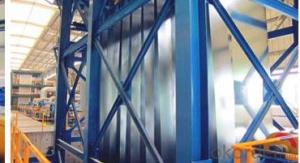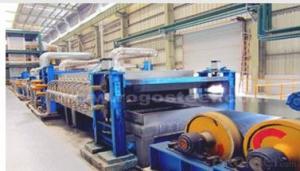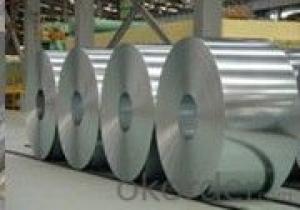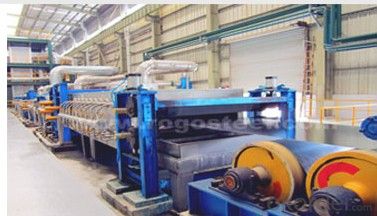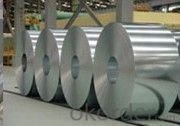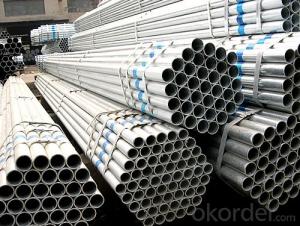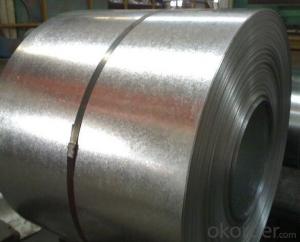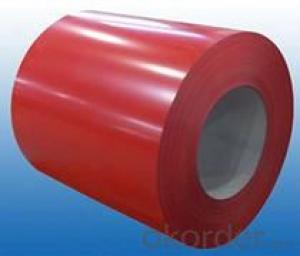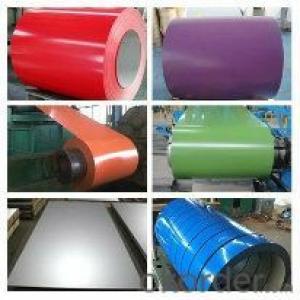GALVANIZED STEEL COIL -REGULAR SPANGLE -N
- Loading Port:
- China Main Port
- Payment Terms:
- TT OR LC
- Min Order Qty:
- -
- Supply Capability:
- -
OKorder Service Pledge
OKorder Financial Service
You Might Also Like
1, Thickness: 0.20mm TCT up to 2mm TCT.
2, Width: 762mm up to 1250mm.
3, Anti-fingerprint Treatment Available.
4, ZINC Caoting: 40-120G/M2.
5, Chromated, Dry, Skin-passed or Non Skin Passed, Tension Level, Shining.
6, Unoiled.
7, Zero Spangle,Mini Spangle ,Regular Spangle, Big Spangle.
8, Temper: No.1, Full Hard (95 HRB; G500-G550).
No.2, Commercial Quality (65 HRB; G300-G350).
9, Coil Weight: 3MT -5MT.
10, Coil ID: 508mm or 610mm.
11, Shipment Method: By Bulk or By Container.
12, Packing: Standard Export Packing.
13, Payment Term: TT or LC at Sight.
14, Delivery: 15-25 Days.
15, Production Lines: Five Lines in all. with an output of 800,000MT Anually
- Q: Basically when i'm older, my dream Job would be, to be to start a steel mill, I've always loved the idea of working in Business and investing in things has always been a hobby of mine. i play games where u invest and make money. all i need is some facts about starting a steel mill?What requirements i need,- How time consuming is it,- How easy is it,- How to get started,- The Perks,- The downsides..how much would it cost to start one, like land, place, iron etc, to get started? also i would need a bank loan, how much money will the bank give me ? 80%??
- Typically, steel mills are worth $20 million to $200 million and are owned by large corporations. Your best bet to own one would be to take over a corporation that already has one. That way you have all the supply lines, customers, experts and other workers already there, too. Stick with investing in going concerns, so you don't need to be an expert in each business to build it up. Get them ready made, learn the details from the people already doing it, then work out ways to improve it. Do not get tempted to borrow even 10c from the scammers who have answered your question. Start saving your real money, reading the financial news, and making small real investments in real stocks.
- Q: What are the surface treatments for steel coils?
- Some common surface treatments for steel coils include galvanizing, painting, and coating. These treatments are applied to protect the steel from corrosion, improve its appearance, and enhance its durability.
- Q: What are the different types of steel coil packaging materials?
- There are several types of steel coil packaging materials, including steel strapping, plastic strapping, stretch film, edge protectors, corner protectors, and cardboard tubes.
- Q: How are steel coils annealed for improved properties?
- Steel coils are annealed for improved properties by heating them to a specific temperature and holding them at that temperature for a certain period of time. This process allows the steel to undergo recrystallization, which helps relieve internal stresses and improve its ductility and toughness. After annealing, the steel coils are slowly cooled, further enhancing their mechanical properties.
- Q: What are the common problems faced during steel coil production?
- Some common problems faced during steel coil production include surface defects such as scratches or dents, dimensional inconsistencies, coil breakage, edge wave formation, and coil slitting issues. Other challenges may include coil corrosion, improper coil cooling, and quality control issues.
- Q: the comparison needed between other steel
- *Mild steel is ductile and can be easily machined. Generation of heat is less than that of steel machining.So, the tool can have better life and you can do more machining. Cost factor is of prime importance as other steel are more costly than Mild steel. Mild steel, a grade of steel that does not harden when heated and chilled with cold water, so further machining can be easy. Mild steel is easily available.You will find it in your scrape yard. No need to change the tool repeatedly and no special tools are required for machining. Above is the comparisation between alloy steel,SS and superalloys. Cutting speed and feed does not required special skills.
- Q: How are steel coils transported internationally?
- Steel coils are typically transported internationally by sea, as they are usually too heavy and bulky to be transported by air. The most common method of transportation is by using specialized shipping containers known as flatracks or open-top containers. These containers allow for easy loading and unloading of the steel coils onto the vessel. Before transportation, the steel coils are usually securely strapped or banded together to prevent any movement or damage during transit. They are then loaded onto the flatracks or open-top containers using cranes or forklifts. The coils are carefully placed and secured onto the containers to ensure stability and to prevent shifting during the journey. Once loaded, the containers are sealed and transported to the nearest port, where they are loaded onto cargo ships. These ships are specifically designed to transport heavy and oversized cargo. They are equipped with specialized handling equipment such as cranes and ramps to facilitate the loading and unloading of the containers. During the journey, the cargo ships follow predetermined shipping routes to reach the destination port. The duration of the journey depends on the distance between the origin and destination ports. Steel coils are typically transported in large quantities, so multiple containers may be loaded onto a single ship. Upon arrival at the destination port, the containers are unloaded from the cargo ship using cranes or ramps. The steel coils are then carefully removed from the containers and transported to their final destination, which may involve further transportation by road or rail. Throughout the transportation process, it is crucial to ensure that the steel coils are adequately protected from moisture, corrosion, and other potential damages. Special attention is paid to the handling and stowage of the coils to minimize the risk of any structural damage or deformation. In summary, steel coils are transported internationally by sea using specialized shipping containers. The coils are securely loaded onto flatracks or open-top containers, which are then transported by cargo ships to the destination port. Proper handling and stowage techniques are employed to ensure the safe and secure transportation of the steel coils.
- Q: What is the maximum weight capacity for a steel coil lifting device?
- The maximum weight capacity for a steel coil lifting device can vary depending on its design and specifications. It is important to refer to the manufacturer's guidelines and specifications to determine the specific weight capacity for the lifting device in question.
- Q: What are the different methods of coil edge trimming?
- Various industries commonly use several methods for coil edge trimming. These methods include: 1. Shearing: Cutting the edges of the coil is accomplished using a shear blade. Shearing is a popular technique for thick coils and can be done manually or with a machine. It provides a clean and straight cut but may not be suitable for thin or delicate materials. 2. Slitting: In this process, the coil is passed through slitter knives that make multiple cuts along the edge, creating narrower strips. Slitting is commonly used for producing narrow coils or strips of various widths. It can be done in-line with a coil processing line or as a separate standalone process. 3. Laser cutting: A precise method of coil edge trimming, laser cutting employs a high-powered laser beam to cut through the material. It offers high accuracy and flexibility for cutting complex shapes or patterns. Laser cutting is commonly used for thin or delicate materials, minimizing the risk of deformation or damage caused by other cutting methods. 4. Plasma cutting: Plasma cutting is a thermal cutting process that employs a plasma torch to cut through the coil. It is suitable for cutting a wide range of materials, including thick coils. Plasma cutting is known for its high cutting speed and ability to cut through materials with high melting points, such as stainless steel or aluminum. 5. Waterjet cutting: This method utilizes a high-pressure jet of water mixed with an abrasive material to cut through the coil. It is a versatile technique that can cut a wide range of materials and thicknesses. Waterjet cutting provides a smooth and precise cut without heat-affected zones, making it suitable for sensitive materials. 6. Guillotine cutting: Guillotine cutting involves using a guillotine-style blade to cut through the coil. It is a quick and efficient method that provides a straight cut. Guillotine cutting is commonly used for cutting coils of various thicknesses and is often performed with a machine for higher precision. Each method of coil edge trimming has its own advantages and considerations depending on the specific requirements of the application. The choice of method usually depends on factors such as material properties, thickness, desired cutting accuracy, production volume, and budget constraints.
- Q: How are steel coils used in the production of storage tanks and silos?
- Steel coils are an essential component in the production of storage tanks and silos due to their strength and durability. These coils are typically made from high-quality steel and are processed through various manufacturing techniques to attain the desired thickness and shape. In the production process, steel coils are first uncoiled and then cut into specific sizes and lengths to meet the requirements of the storage tank or silo design. The coils are then shaped into cylindrical sections, using bending and rolling machines, to create the main body of the tank or silo. Once the desired shape is achieved, the coils are welded together to form a continuous and secure seam. This welding process ensures that the tanks and silos are leak-proof and can withstand the pressure exerted by the stored materials. Furthermore, steel coils also play a crucial role in reinforcing the structure of storage tanks and silos. They are often used to create the roofs, bottoms, and other structural components of these storage units. The strength and resilience of steel make it ideal for withstanding the weight of the stored materials and any external forces that may be exerted on the tank or silo. Additionally, steel coils can be coated or treated with protective materials to enhance their resistance to corrosion and extend their lifespan. This is particularly important for storage tanks and silos that are used to store corrosive substances or are exposed to harsh environmental conditions. Overall, steel coils are a fundamental element in the production of storage tanks and silos, providing the necessary strength, durability, and structural integrity required for these storage units.
Send your message to us
GALVANIZED STEEL COIL -REGULAR SPANGLE -N
- Loading Port:
- China Main Port
- Payment Terms:
- TT OR LC
- Min Order Qty:
- -
- Supply Capability:
- -
OKorder Service Pledge
OKorder Financial Service
Similar products
Hot products
Hot Searches
Related keywords
